Satellite images of bright waters in the Black Sea
Bright waters in this area were not seen during 1978-86 by the CZCS
satellite (see
global distribution), but in the last few years there have been many
striking images detected by SeaWiFS. In-situ sampling has verified
the cause of bright waters as E. huxleyi on at least one occasion. The cause
of the apparent increase in Emiliania huxleyi blooms may relate to changes
in nutrients over time, due to changes in Danube input.
[click on the small pictures on this page to view them at full size]
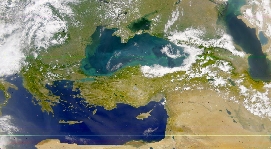
June 16th, 1998. Provided by the SeaWiFS Project, NASA/Goddard Space Flight Center and ORBIMAGE.
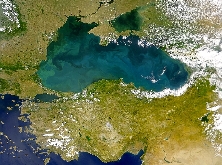
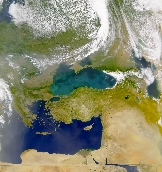
June 11th (left) and June 13th (right), 2000. Provided by the SeaWiFS
Project, NASA/Goddard Space Flight Center and ORBIMAGE.
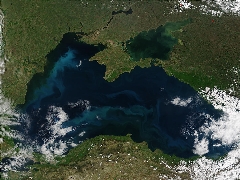
May 11th 2002, as seen by
MODIS. Image
courtesy of Jacques Descloitres, MODIS Land Rapid Response Team at NASA
GSFC.
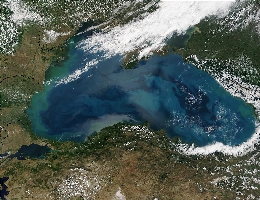
June 15th 2002, as seen by
MODIS. Image
courtesy of Jacques Descloitres, MODIS Land Rapid Response Team at NASA
GSFC.
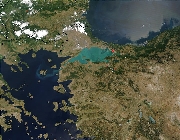
June 25th 2003 in the Sea of Marmara, the southern exit to the Black Sea,
near to Istanbul (as seen by MODIS). Image
courtesy of Jacques Descloitres, MODIS Land Rapid Response Team at NASA
GSFC.
Click here to see a time-series
of images showing the progress of the Sea of Marmara bloom.
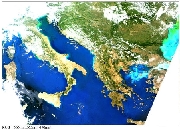
Probable E. huxleyi blooms in the Sea of Marmara and in the Black Sea
(western side) on 21st June, 1997. Picture from the ADEOS OCTS sensor.
Ehux
home page
Toby Tyrrell : T.Tyrrell@noc.soton.ac.uk






